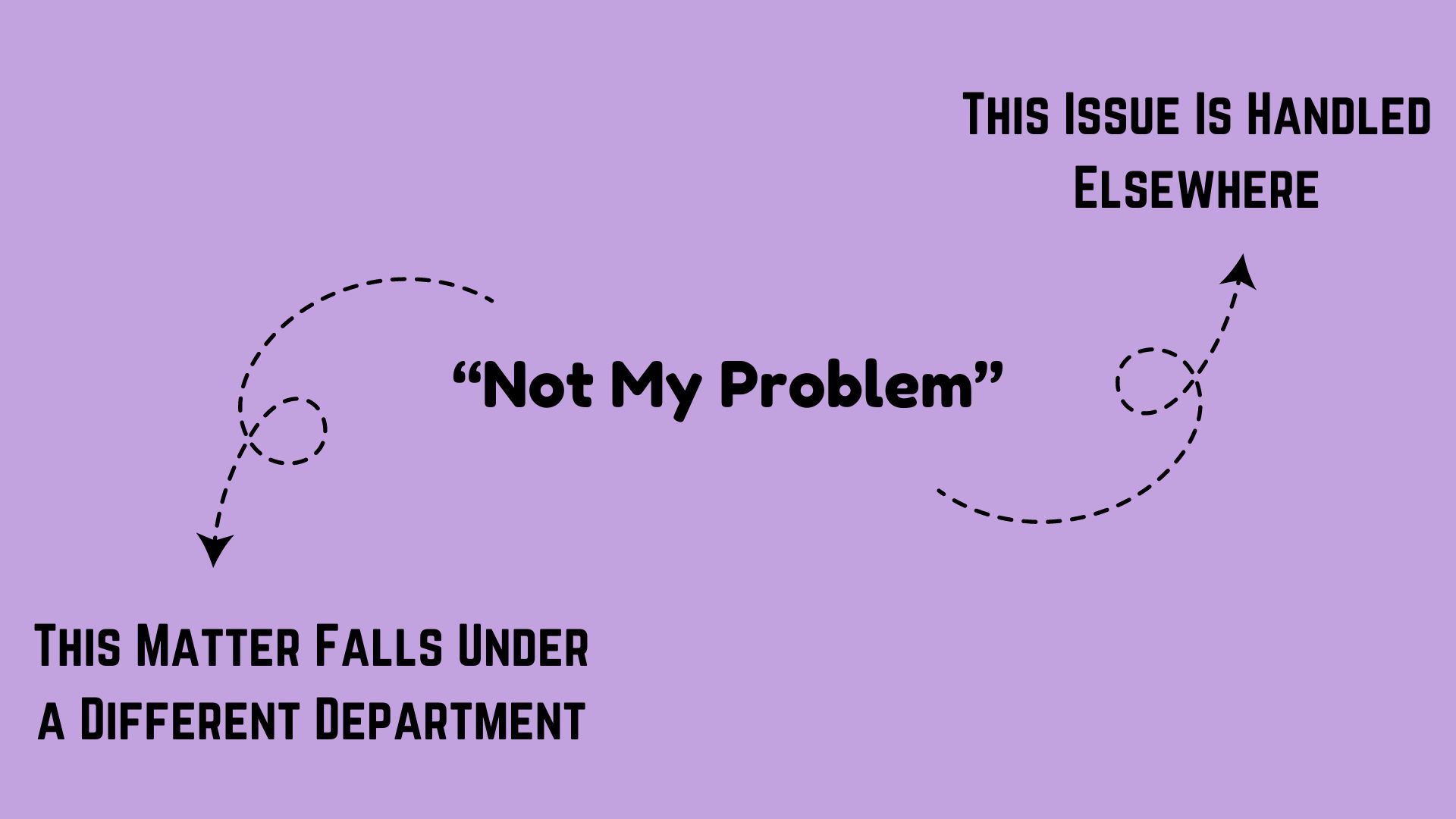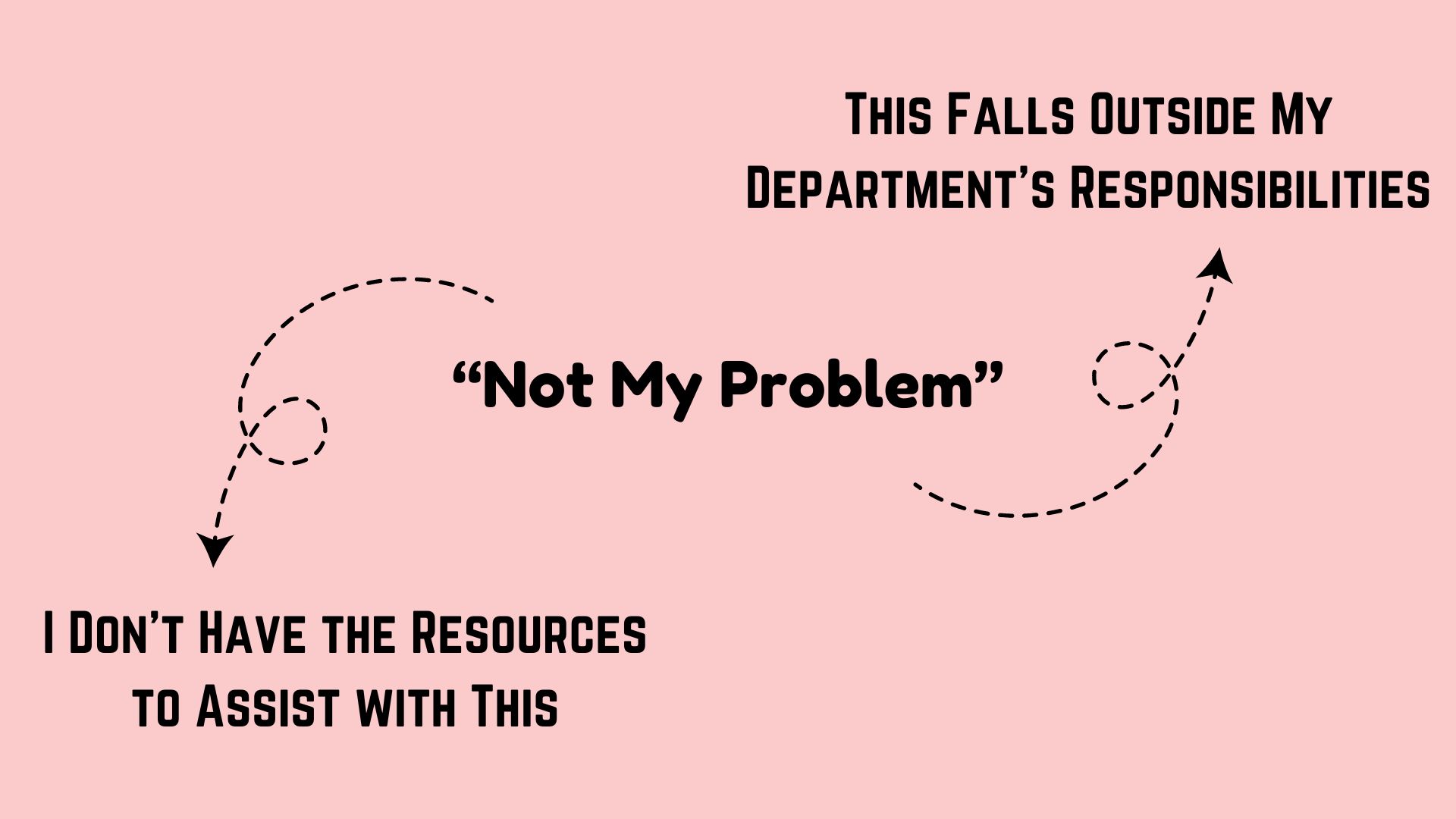In professional settings, it’s important to handle situations where something isn’t your responsibility without sounding dismissive. Here are 22 ways to say “Not my problem” professionally, each with an example and use case to help maintain a respectful tone.
1. That Falls Outside My Scope
Example: “That falls outside my scope, but I can connect you with someone who can help.”
Use Case: When something is not within your job responsibilities, but you offer assistance by pointing to the right person.
2. I Recommend Speaking with [Department/Person]
Example: “I recommend speaking with the IT department to resolve this issue.”
Use Case: When directing someone to the correct team or individual to handle their request.
3. I’m Not the Best Person to Address This
Example: “I’m not the best person to address this, but I can put you in touch with someone who can.”
Use Case: When acknowledging that the issue is beyond your expertise, but offering a helpful alternative.
4. This Is Outside My Area of Expertise
Example: “This is outside my area of expertise, but I’ll direct you to someone who can assist.”
Use Case: When a task requires specialized knowledge that you don’t have.
5. I’m Unable to Assist with This Matter
Example: “I’m unable to assist with this matter, but feel free to reach out to HR for more guidance.”
Use Case: When letting someone know you can’t help but providing another resource.

6. I Suggest Reaching Out to [Department/Team]
Example: “I suggest reaching out to the customer service team for assistance.”
Use Case: When pointing someone in the right direction to get their problem solved.
7. This Task Doesn’t Fall Under My Role
Example: “This task doesn’t fall under my role, but I’ll guide you to the right department.”
Use Case: When the task isn’t your responsibility, but you still offer guidance.
8. That’s Handled by a Different Department
Example: “That’s handled by a different department; I’ll provide you with their contact information.”
Use Case: When you want to clarify that another team or department is responsible for the issue.
9. You May Want to Connect with [Person/Team]
Example: “You may want to connect with the legal team to review this document.”
Use Case: When directing someone to the appropriate team for their specific issue.
10. I’m Not Involved with That Area
Example: “I’m not involved with that area of the project, but here’s who can help.”
Use Case: When clarifying that you’re not part of a specific project or task.

11. This Is Beyond My Responsibilities
Example: “This is beyond my responsibilities, but I’m happy to refer you to the right contact.”
Use Case: When setting boundaries on your role but still offering helpful information.
12. That’s Something [Department] Handles
Example: “That’s something finance handles, and I’ll pass along their contact details.”
Use Case: When letting someone know that another department manages the issue they’re dealing with.
13. This Would Be Better Addressed by [Team]
Example: “This would be better addressed by the tech support team.”
Use Case: When suggesting that someone else is more suited to resolve the problem.
14. This Isn’t Within My Role, But I Can Assist in Another Way
Example: “This isn’t within my role, but I can help by introducing you to someone who can assist.”
Use Case: When acknowledging that the task isn’t yours but still offering support.
15. You’ll Need to Reach Out to [Person/Department]
Example: “You’ll need to reach out to our compliance officer for that information.”
Use Case: When directing someone to a specific person or department for resolution.

16. This Issue Is Handled Elsewhere
Example: “This issue is handled elsewhere; I’ll send you the contact details for the appropriate team.”
Use Case: When informing someone that their request belongs to a different area.
17. This Matter Falls Under a Different Department
Example: “This matter falls under a different department, and I’ll provide their contact information.”
Use Case: When making it clear that another department is responsible for handling the issue.
18. I Don’t Have the Resources to Assist with This
Example: “I don’t have the resources to assist with this, but here’s the team that can help.”
Use Case: When you lack the tools or capacity to help and need to direct someone elsewhere.
19. This Isn’t My Area, But I’ll Connect You with the Right Person
Example: “This isn’t my area, but I’ll connect you with the person who handles these requests.”
Use Case: When clarifying that the issue isn’t your responsibility but ensuring the person gets help.
20. This Falls Outside My Department’s Responsibilities
Example: “This falls outside my department’s responsibilities; the operations team would be better equipped.”
Use Case: When a matter is for another department to handle, and you’re making that distinction clear.

21. This Task Isn’t Within My Role, but I’ll Help You Find a Solution
Example: “This task isn’t within my role, but I’ll help you find a solution through the proper channels.”
Use Case: When acknowledging that the issue doesn’t belong to you but still offering support in finding help.
22. That’s Best Handled by [Team]
Example: “That’s best handled by our legal team; I’ll pass along their contact.”
Use Case: When someone’s request is outside your area, and you need to redirect them to the right team.
These alternatives help you professionally communicate that something is not your responsibility while maintaining a helpful and respectful tone.

